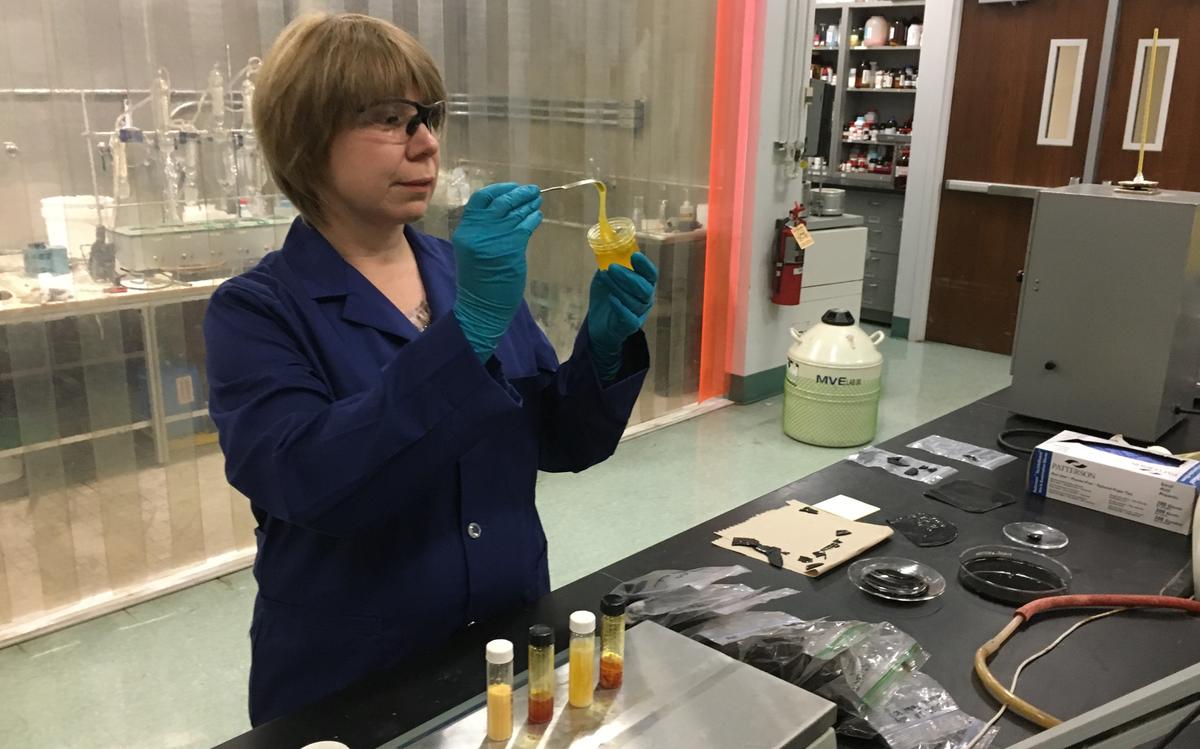Beyond its appeal alongside turkey and stuffing, cranberries are a $70 million industry in the United States. But what’s not showing up on your Thanksgiving table might have surprising value – the cranberry skins and seeds leftover from juice processing, called “pomace.”
What makes it valuable is the waxy “cutin” in this byproduct of the juice and sauce industry. Many plants have cutin in their skins – apples, pears, blueberries – that have potential to be repurposed into a bio-based binder or coating for many products.
“We developed these binders to improve the moisture resistance and durability of wood pellets,” explained Tim White, NRRI Business Development and Intellectual Property Manager. “But there are potentially other markets seeking a low-cost, natural material with effective binding and coating capabilities.”
NRRI scientists patented two bio-based binder products that make wood pellets and briquettes water resistant and dust-free. The cutin-based binder has been produced from cranberry pomace. A birch bark-based binder was also developed utilizing the unique mixture of fatty acids, sterols and waxes from the outer birch bark. Birch bark is a waste stream resource from the paper and lumber industries.
Industry Need
Wood pellets used to heat buildings, or even for new pellet-based barbeque grills, can muck up a system quickly if they get wet. They’re also dusty, causing problems during shipping and handling.
More than a decade of research went into the development and testing of NRRI’s patented binders to address those problems.
“We tested many, many compounds and mixtures to make a green industry binder for the torrefied wood fuel products we were developing,” said Oksana Kolomitsyna, lead chemist on the science team that received the patents. “Our process of isolating and modifying the compounds from cranberry pomace and outer birch bark achieved our goals, and the final products have biodegradable properties.”
Other patent researchers include NRRI’s Materials and Bioeconomy Director Eric Singsaas, Associate Director (retired) Don Fosnacht, Agglomeration Specialist Tim Hagen and Biomass Specialist Matt Young.
This new method provides novel mixtures of fatty acids, fatty acid esters, sterols and waxes that have a neutral pH and produce no corrosive gases during combustion. The binders are also very environmentally friendly, as no chemical cross-linking agents, such as formaldehyde, are required.
NRRI’s Chemical Derivatives Lab has long searched for value in waste stream byproducts of the wood products industry. Early work in deriving betulin, lupeol, betulinic acid and other chemicals from outer birch bark has led to an extraction production business in Two Harbors, The Actives Factory, and two marketable product lines.
Commercialize
White, working in conjunction with the University of Minnesota Technology Commercialization office, is hoping the two bio-binder products can meet an industry innovation need that will keep these resources from being waste materials.
“We are continuing our R&D on a variety of uses for the binders, but there are probably interesting applications that we might not have considered,” said White.
Information for those interested in knowing more about the binders commercialization potential can visit the University’s “Available Technologies” website at license.umn.edu or contact Tim White at twwhite@d.umn.edu.
